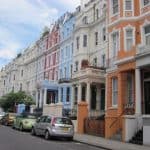After my post on the emerging destinations index, I got some really good feedback about how misleading calling them “emerging destinations” was. As I replied in the original comment thread it was mostly a derivative from the original “emerging markets” index which is where I got the data from. It just happens that some emerging markets have been top tourist destinations for a long time. So it’s likely a good idea to amend the unfortunate name as I plan to continue tweaking the index until it ranks real emerging destinations.
The idea is to come up with a certain way to organize information about destinations in such a way that those that have good infrastructure but have not yet developed as top tier tourist destinations can be identified. As it is, the index has yet to factor a number of things:
- It must account for current inbound tourism. This must be an inverse correlation as we would want those regions with fewer tourists to bubble up in the rank. I found an old table with the World’s Top Tourism Destinations, which will do for now, but it will work much better the more granular data I can get. Most of these stats are only available per country.
- As I’m planning to use this index to drive a different type of travel, tourism infrastructure is not a must, but there are some key elements that must be satisfied such as availability of quality lodging and a healthy network of suppliers to cater to those visiting. I think some of the dimensions already included in the index are accounting for general infrastructure, but it would be great to get more specific data.
- If I seem obsessed with collecting city rankings is because I believe cities matter. While large cosmopolitan cities act as a bridge to the rest of the world by spreading global culture, smaller cities in the surrounding areas may have a very different attitude yet be excellent destinations for certain types of activities. This means that all the data needs to be very granular.
There are “softer” elements that will have to be added to the index down the road, but I’m not sure how to account for them yet. To understand these I have to refer back to my post a village… once upon a time
I’m thinking “slow-urban”, a slum of hope attracting urbanites, an inexpensive property characterized by the lack of urban infrastructure but rich on more important aspects of life. The antithesis of our suburbs.
Being the antithesis of a suburb implies a certain buzz that is common in “happening” city neighbourhoods; a sense of locality which eliminates the need for unnecessary commutes for daily chores; an interesting community that seeks to grow by tapping on the resources of each individual. All this while providing a safe distance to the always busy urban pace and its obsession with hyper-productivity. For these characteristics I have yet to find a good metric.







